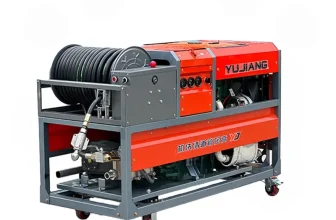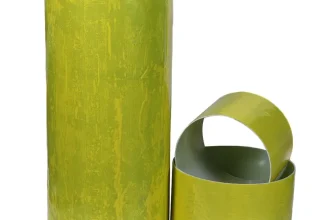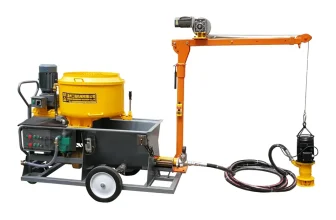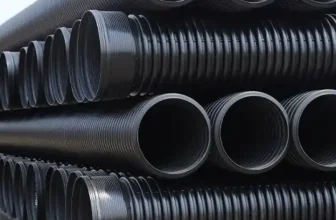A sewer line inspection is a diagnostic procedure carried out by
plumbing professionals to check the condition and functionality of a
property’s sewer line. This process involves the use of a specialized
camera which navigates the sewer line underground, recording video
footages that allow experts to analyze and ascertain the state of the
pipes. Sewer line inspections are crucial for identifying clogs,
blockages, leaks, root intrusions, corrosion, or any other problems that
might compromise the effectiveness and safety of the sewer system. They
provide invaluable information needed to make informed decisions about
necessary repairs or potential replacements.
Importance of
conducting a sewer line inspection
Having a sewer line inspection is crucial to maintaining a clean and
healthy household. This process allows you to identify potential
problems in your sewer system before they escalate into significant,
costly issues. Issues like leakage, blockage or corrosion can lead to
severe structural damage to your property, affecting the overall
integrity and safety of your home. Regular inspections can help nip such
issues in the bud, saving homeowners considerable repair costs, time,
and stress. Also, if you’re considering buying a new property, a
pre-purchase sewer inspection can prevent any unpleasant surprises down
the line. The process offers insights on the condition of the sewer
system, enabling you to make an informed decision about the property in
question. Therefore, though an added expense, a sewer line inspection is
an essential preventive measure that’s worth every penny.
Factors
that Influence the Cost of a Sewer Line Inspection
Size of Your Property
The size of your property can significantly impact the cost of your
sewer line inspection. For larger properties, the sewer line may be
longer and more intricate, hence needing more time and resources for a
thorough inspection.
Bigger properties may have complex sewer system layouts with multiple
branches of sewer lines running across the property. As such, the
process of inspecting longer and more intricate sewer lines is more
labor-intensive, and this can influence the cost of the sewer line
inspection upwards.
Smaller properties, on the other hand, will typically have a shorter
sewer line and less complicated system, hence requiring less time and
effort to inspect, thus being a bit more affordable in terms of the
inspection cost.
In general, sewer line inspectors may calculate their fee based on
the linear foot of the sewer line. Therefore, property owners can
anticipate the inspection cost will rise relative to the length and
complexity of their sewer line. It’s also worth noting that every
property is unique and will have different obstacles that can influence
the cost.
Location and
Accessibility of Your Sewer Line
The location and accessibility of your sewer line can greatly affect
the cost of inspection. For instance, if your sewer line is easily
accessible and found on the property’s surface, inspection will be
relatively straightforward and the inspector won’t have to spend as much
time. Thus, the cost would be less compared to sewer lines that are
harder to locate and access.
Sewer lines situated in difficult-to-reach areas, such as beneath
landscaping, concrete, or structures, are more challenging and
time-consuming to inspect. In such scenarios, the additional work
involved in reaching the sewer line could result in a higher inspection
cost.
The distance from the house to the city sewer line is another factor
that influences the cost. Lines that run a substantial length across the
property may require more time and even different strategies to
accurately assess, which could potentially add to the inspection
cost.
Furthermore, if your sewer line is in a location with restricted
access, perhaps due to building codes or environmental concerns,
resolving these issues can add extra charges to your inspection
bill.
Thus, a good understanding of your sewer line’s location and
accessibility will help you gauge the potential costs of the
inspection.
Complexity of the Inspection
The complexity of the inspection can significantly influence the
cost. In some cases, sewer lines can be relatively straightforward to
inspect. This is most common in newer homes or properties where the
sewer lines have been recently updated and maintained. In such cases,
inspectors may need only a few hours and standard equipment to complete
their job, keeping costs lower.
However, in older homes, or those with a history of plumbing issues,
the inspection can be much more involved. If the sewer lines are older,
or if there is a history of blockages and clogs, inspectors might have
to use more advanced and expensive equipment. They may also need to
spend more time on the inspection, perhaps even needing multiple visits
to completely assess the condition of the lines.
Similarly, if the sewer lines have a complex layout, with multiple
bends, junctions, or offshoots, the inspection process can become more
intricate and time-consuming. The inspection might require special
equipment to navigate through the lines or more personnel to handle the
extra work. All these factors lead to a higher cost for the inspection.
So, it is essential to consider your property’s age, its plumbing
history, and the layout of the sewer lines when estimating the cost of
inspection.
The Average Cost of
Sewer Line Inspection
Average Cost across the
United States
In the United States, the cost of sewer line inspections can vary
greatly depending on a range of factors we mentioned earlier. However,
on average, homeowners should expect to pay somewhere between $250 and
$500 for a standard sewer line inspection. This price tends to include
the service fee for the work along with the utilization of special
equipment like cameras for detailed inspections.
While it’s true that some inspections might come in at a lower cost
around $200, these are typically basic evaluations without the use of
advanced tools and might not provide a comprehensive inspection. On the
high-end, particularly intricate inspections involving complex sewer
systems can cost up to $800 or more.
Remember, these are just the averages. The actual cost could go
higher based on the accessibility of your sewer line, the extent of the
inspection needed, and any additional services required once problems
are found. It’s critical to remember that while these costs may seem
steep, they are significantly lower than the expense of a major sewer
line issue left unchecked.
Cost Differences in
Urban and Rural Areas
Urban and rural areas can exhibit a considerable difference in the
cost of sewer line inspections. Many variables contribute to these cost
discrepancies.
In urban settings, sewer line inspections often come with a higher
price tag. This is because cities and densely populated areas generally
have more complex sewer systems, resulting in longer inspection times
and increased use of advanced equipment. Furthermore, the location of
urban sewer lines, often nestled among a labyrinth of other underground
utilities, can also increase risk, complexity, and consequently, the
price.
On the other hand, rural properties typically have simpler systems
and potentially easier access, which might facilitate a more
straightforward inspection process. This ease of access often translates
into lower cost for sewer line inspections. However, it is crucial to
note that if a property is located in a remote area, travel cost might
be added onto the service fee, which could increase the overall
cost.
Regardless of the locality, it’s important to remember each sewer
line inspection is unique, and prices can vary dramatically based on the
specifics of the property and its sewer system.
Detailed Costs
Involved in Sewer Line Inspection
Professional Inspection Fee
The professional inspection fee accounts for a significant portion of
the total costs incurred during a sewer line inspection. This fee is
primarily related to the labor costs, expertise, and time spent by the
plumber or drain technician conducting the inspection. On average, the
professional inspection fee may range anywhere from $250 to $500,
although this figure may vary based on a multitude of factors such as
regional price differences, the reputation of the service provider, and
the complexity of the task at hand. It is highly recommended to gather
quotations from various service providers in order to get a reasonable
estimate of the expected expenditure.
Special Equipment Fee
Special equipment such as cameras for sewer line inspection can
impact the overall cost as well. These advanced cameras are crucial in
identifying blockage and other potential issues. The cost for the use of
these special pieces of equipment can range from $100 to $500, depending
on the type and sophistication of the equipment. Additionally, if the
inspector uses locator devices or smoke machines to find leaks, it can
add to the cost of the inspection. However, the provision of a more
thorough inspection using special tools and equipment will ensure a more
accurate result.
Extra Charges for
Additional Services
Occasionally, extra services may be required during a sewer line
inspection, leading to additional costs. For example, if a blockage is
discovered during the inspection, you’ll likely need to pay an
additional fee for either a hydro jetting or sewer snaking service to
clear the obstruction. The complexity of the blockage and the tools used
for removal will determine the cost which could range from $100 to $400
on average.
In some cases, severe obstructions may require video inspection
services for a clearer understanding of the issue. This service deploys
a high-tech, waterproof camera tethered on a flexible rod that invades
the pipes to give real-time video feed of the condition of the sewer
line. This service typically comes with an additional fee of around $250
to $500.
As each sewer line inspection differs based on the home’s specific
situation, these extra services, among others, may or may not be
required. It’s crucial to consult with the professional conducting the
inspection to discern if you’ll incur these additional costs.
Potential Additional
Expenses
Cost of Repair
or Replacement if Problems Found
If during the inspection, issues are discovered with your sewer line,
the cost to repair or replace the line will represent a significant
additional expense. The cost can range from a few hundred to several
thousand dollars, based on the nature and extent of the damage.
For instance, minor repairs such as fixing a small leak or unblocking
the line could cost somewhere between $50 and $250. More extensive
repairs like replacing a small section of the pipeline could go from
$500 to $1000. However, in severe cases where an entire line requires
replacement, the cost could skyrocket anywhere from $3000 to $25000.
Keep in mind that the amount significantly varies depending upon
factors such as labor costs, the materials used, and the length and
depth of the sewer line. Therefore, homeowners must be prepared for
these substantial costs if problems arise during the sewer line
inspection.
Consulting fees for plumbers
Hiring a professional plumber for consultation can also add to the
overall cost of a sewer line inspection. These costs can vary widely
based on the complexity of the issue, the plumber’s level of expertise,
and geographical location. Consulting a plumber is integral when
determining the severity of an issue flagged during an inspection.
Often, after an initial sewer line assessment, additional depth of
expertise is required. A plumber could provide a more detailed
evaluation, problem solving, and formulate a plan of action for any
necessary remediation. This could involve a second site visit and
further diagnostic testing.
Fees for this kind of specialist consultation typically range from
$50 to $200 per hour, depending on the plumber’s rates and the nature of
the problem. While it does add to the upfront costs, investing in
professional advice can save you from pricey repairs in the future by
accurately diagnosing issues and prescribing targeted solutions. It’s
essential to budget for such a possibility to avoid unexpected
expenses.
Possible changes to
landscaping
When dealing with sewer line inspections, one factor you might not
initially consider is the potential changes to your landscaping. In some
cases, the inspector may need to conduct a dig-and-replace inspection
method, especially if your property has an older sewer system. This type
of inspection involves digging into the yard to expose the sewer
line.
This process can unfortunately disrupt your yard, garden, or any
landscaping feature that lies above the sewer line. You might need to
spend money restoring your lawn or garden after the inspection. Costs
can vary based on the extent of the damage and the complexity of your
landscape. For instance, if you have an intricate garden design or
expensive plants that were affected, you will have to bear the cost of
reinstating these features.
It’s also worth mentioning the potential of damaging underground
structures like irrigation systems. Should these systems be effected
during the inspection, there may be additional inspection charges or
repair fees.
While it’s difficult to estimate the specific amount you might spend
on this, it’s crucial to consider it as part of your budget when
planning for a sewer line inspection. And remember, not all inspections
will require this, especially if a camera inspection can be used
instead. However, it is an important potential cost to keep in mind.
How to Save on Sewer
Line Inspection Cost
Regular maintenance
to avoid major issues
Regular maintenance of your sewer line system is one of the key
strategies for averting major issues and subsequently saving costs on
your inspections. It is recommended to have a professional conduct
routine checks on your sewer lines at least once every year or two,
depending on the age of your pipes. These checks can identify potential
problems while they are still small and easier to manage, such as minor
blockages or small leaks.
Essentially, regular maintenance checks serve as preventive care for
your sewer lines. Just as routine health check-ups can catch early signs
of illness, so do these inspections prevent small issues from ballooning
to large, expensive repair projects. Regular sewer pipe maintenance not
only saves you from hefty repair bills, but also extends the lifespan of
the system, pushing back the significant cost of replacement.
However, this does not mean you should ignore any warning signs
between checks. Indicators of sewer line issues might include foul
odors, slow drains, or irregularities in your lawn. Immediately calling
a professional when you notice such signs can help pinpoint minor,
cost-effective adjustments before they escalate into a pricier
problem.
Comparing
prices from different service providers
Another effective way to save on the cost of a sewer line inspection
is by shopping around and comparing prices from different service
providers. As with any service, prices for sewer inspections can vary
tremendously from one company to another. This competition among service
providers can be of advantage to consumers if they take the time to do
some research and price comparison.
Start by gathering quotes from several service providers. Look at
what each quote includes. Some companies might offer lower prices, but
their service might not be as comprehensive as that of higher-priced
competitors. Ensure that the quote includes all the necessary aspects of
a thorough sewer line inspection.
Bear in mind that while price is an important consideration, it
should not be the only factor that influences your decision. The
experience, reputation, and reliability of the service provider are
equally crucial. Preferably, choose a company that balances cost with
quality services. Recommendations from friends, family, or online
reviews can also be a great help to select a reputable service.
Remember, price comparisons don’t just save you money initially, they
can prevent costly mistakes down the line. A low-quality inspection
might not identify all potential issues, leading to expensive repairs in
the future. So while comparing prices, make sure you are also comparing
the value offered by each service provider.
DIY Inspection: Pros and Cons
Jumping into a do-it-yourself or DIY sewer line inspection is another
option homeowners might consider to potentially reduce costs.
One of the advantages of a DIY sewer line inspection is, of course,
financial savings. Hiring professionals can be expensive, thus
performing the task yourself can save you a significant amount of money.
Furthermore, committing to DIY inspections allows you to become familiar
with your property’s sewer system, which can be a valuable skill in
times of emergencies or sudden breakdowns.
However, it’s imperative to note that performing a sewer line
inspection requires expertise and specialized equipment. The absence of
necessary skills can lead to a failed inspection or even the inadvertent
worsening of your sewer line’s state. One might also miss subtle signs
of damage or impairment that an experienced professional would more
likely catch. This risk could lead to even more costly repairs down the
line.
Also, keep in mind that the necessary equipment, like sewer camera
inspections tools, isn’t cheap. While these could be rented, it would
still be an additional cost that should be considered when weighing the
pros and cons of a DIY sewer line inspection.
Lastly, conducting your own inspection may also be incredibly
time-consuming, particularly for those unfamiliar with the process. It
could be a substantial commitment taking away time that could be
utilized in other important areas of your life.
In conclusion, while DIY inspections may offer cost benefits, they
carry risks and potential added costs that should not be ignored. Those
considering this option need to weigh these factors carefully and
determine whether they can confidently take on the task effectively. If
not, it may be wiser and more cost-effective in the long run to hire a
professional.
Importance of
Budgeting for Sewer Line Inspection
Avoiding Unexpected Costs
Budgeting for a sewer line inspection can be a significant step
towards avoiding unexpected expenses. Often, homeowners are caught off
guard by significant repair or replacement costs that might emerge from
a sewer line inspection. It’s an unfortunate fact that many sewer line
issues remain hidden until they become serious, leading to substantial
repair costs that you might not be financially ready for.
Having a budget for sewer line inspection allows you to be
financially prepared for any necessary repairs that might come to light
during the procedure. It’s also beneficial in instances when possible
issues are caught early during an inspection. In these cases, money from
the budget can be used for fixing the problems promptly before they
escalate, thereby potentially saving you from hefty expenses down the
line.
Remember, putting off an inspection due to costs can cause you to
incur higher repair expenses over time. By budgeting for regular sewer
line inspections, you are essentially investing in the longevity of your
home’s sewer system, which can save you money in the long run. Hence,
budgeting accurately can help you avoid unexpected financial stress
related to your sewer line.
Importance of
routine checks to prevent larger issues
Routine checks for sewer line inspection are vital in preventing
extended problems that could result in much bigger issues down the line.
These checks allow homeowners to catch minor problems before they
escalate into significant costly repairs or replacements.
By incorporating these routine inspections into their budget,
homeowners can monitor the health of their sewer lines closely, quickly
detecting any abnormalities or defects. Down the line, this proactive
approach tends to be more economical as it mitigates the risk of severe
damage to the sewer system which may be costlier to fix.
Besides the financial aspect, regular sewer line inspections can save
homeowners from the mess and inconvenience that serious sewer line
issues can cause. Havoc from unattended sewer problems can lead to
sanitation issues and potentially even displacement from one’s home
during extensive repairs.
In sum, regular budgeting for sewer line inspections not only helps
homeowners keep track of the condition of their sewer lines but the
frequent checks also act as a preventive measure against potential
large-scale problems and unplanned expenses.
Conclusion
Recap of the factors
affecting the cost
Understanding the overall cost of a sewer line inspection involves
considering various factors. Firstly, the size of your property can
significantly determine the cost. A larger property may need a more
comprehensive inspection, which can increase the price.
The location and accessibility of your sewer line also play a crucial
role. If the sewer line is easy to access, the inspection cost might be
lower than for one located in a hard-to-reach area.
The complexity of the inspection itself is another important point.
An inspection that requires special equipment or techniques will cost
more than a straightforward one.
It’s also key to remember that the average cost varies, depending on
whether you live in an urban or rural setting. Metropolitan areas often
have higher operating costs, which can be reflected in the pricing.
Lastly, the possibility of extra charges for additional services,
such as minor repairs or further consultation, also impacts the cost.
Keep in mind potential landscaping changes or additional repair expenses
if a serious problem is discovered.
It’s safe to conclude that the cost of a sewer line inspection is not
ironclad and hinges on a wide array of factors. Each element highlighted
above influences the cost you can expect to pay for this essential
service. So it’s always best to be aware and plan accordingly.
Emphasize
on the importance of sewer line inspection
Regular sewer line inspections are fundamental to maintaining a
healthy and functioning property. They can help to identify potential
issues before they escalate into significant, and often costly,
problems. Overlooking this essential task can result in destructive
sewer backups or the need for expensive line replacements. In the end,
the cost of regular inspections pales in comparison to the financial
burden of major repairs or replacements. Furthermore, inspections ensure
peace of mind, knowing your property’s most critical systems are
operating as they should, preserving the comfort, safety, and value of
your home. Therefore, it’s essential not only to budget for regular
sewer line inspections but also to value the vital role they play in
maintaining your property.







